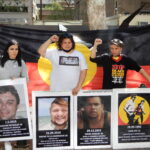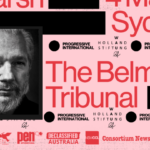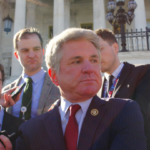No Crime, No Time: ISJA’s Dave Pollock on Reforming Victoria’s Harsh Bail Regime
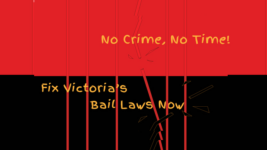
The impacts of harsh bail laws have been increasingly raised over recent years, as state governments have tightened them.
Indeed, last year saw NSW impose an unworkable prohibition on granting bail to those convicted, prior to their “likely” sentencing, unless exceptional circumstances are found.
But nowhere in the country have the calls for bail reform been louder than in the state of Victoria, after 2018 amendments were made to the Bail Act 1977 (VIC), following the January 2017 Bourke Street massacre, which saw six people killed and twenty seven injured in Melbourne’s CBD.
These changes saw presumption against bail implemented, so denial is the standard, and the defence must argue special circumstances as to why it should apply. And this provision doesn’t only capture serious crime, as it now extends to repeat offenders of minor crime.
This tightening of bail has resulted in the number of unsentenced prisoners in Victorian facilities, or those on remand, accounting for close to half the entire prisoner population.
So, in April last year, there were 6,680 incarcerated people in that state’s facilities, yet 47 percent, or 2,963, were remandees.
The greatest burden
These harsh laws, which see potentially innocent people spending time inside after their bail applications are refused, have impacted First Nations communities disproportionately. So, while an excessive 53 percent of all women in gaol are on remand, this jumps to 89 percent when solely looking at First Nations women.
In launching its No Crime No Time: Fix Victorian Bail Laws campaign early last year, the Indigenous Social Justice Association (ISJA) Melbourne has been alerting the public to the rising issue, as well as calling on the Andrews government to put an end to it.
As ISJA makes clear, the huge influx in unsentenced people being denied bail is due to its extension to repeat minor offenders, as serious crimes were already being captured by bail laws.
“These women are not denied bail because they are a danger to the community,” ISJA maintains. “They are denied bail because they are at risk from poverty, family violence, homelessness or mental illness. Many are mothers whose children also pay the price of this unfair bail regime.”
Paying with their life
ISJA further points out that the decades-old and ever-increasing Aboriginal deaths in custody crisis is only being fuelled by this focus on locking up an escalating number of people on the suspicion of having committed more minor crimes.
The death of 37-year-old First Nations woman Veronica Nelson in January 2020 is a prime example of this. Last year’s inquest found that despite repeated calls for help, Nelson was ignored by officers, only to die of acute opiate withdrawal. And she was in prison for the mere suspicion of shoplifting.
Sydney Criminal Lawyers spoke to ISJA spokesperson Dave Pollock about how the bail regime is causing drastic harm, the reforms that his organisation asserts should be taken, and how the colonial project in this nation has long focused on incarcerating Indigenous peoples.
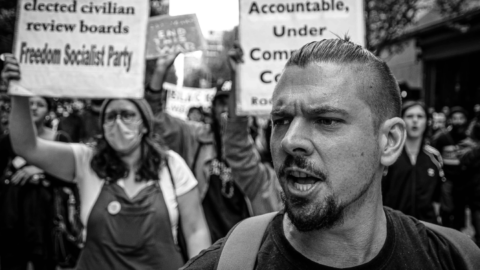
There are a number of jurisdictions around the country where the issue of harsh bail laws has been raised. And the campaign to reform Victoria’s bail laws has been particularly sustained.
So, Dave, why is bail so problematic in Victoria?
In 2018, the Victorian government changed the Bail Act of 1977 in response to a very high-profile case the year before, when James Gargasoulas killed six people and injured many others in a violent car attack on Bourke Street while he was on bail.
The Bail Act 1977 was amended to make it more difficult for people charged with an offence to be approved bail.
There were two key changes to the Bail Act that achieved this.
Firstly, the amendment reversed the onus of proof onto the accused or their defence, rather than the prosecution.
So, rather than the state having to successfully argue a case for denying bail, the onus is now on the defence or a defendant to successfully make that legal argument for it.
This is made more difficult in several ways. If a defendant cannot afford legal representation or receive support from Legal Aid, they have to make what can be a complex legal argument for being granted bail themselves.
Another way this is made more difficult is through the second change to the Bail Act, which concerns the “exceptional circumstances” test.
A defence or defendant must now demonstrate why there are exceptional circumstances under which they should be granted bail.
Previously, before the 2014 amendment, this exceptional circumstances test applied only to the most serious criminal offences.
However, following the 2018 amendment, this test now applies to repeat minor offences.
Therefore, someone repeatedly accused of shoplifting or loitering can be treated the same as someone accused of the most violent or dangerous crimes in the application of the exceptional circumstances test.
The effect of these changes has been devastating. The rate of imprisonment in Victoria has since increased by approximately 21 percent.
The number of Aboriginal and/or Torres Strait Islander people being imprisoned has increased from 6 to 10 percent, even though they comprise just under 1 percent of the Victorian population.
ISJA launched the No Crime No Time campaign early last year. What sort of issues does the liberal use of remand that you’ve been describing lead to?
There’s a plethora of issues that the liberal use of remand leads to. First, and most obviously, is the huge increase in people being imprisoned.
Again, that’s a 21 percent increase since the Act was amended. This compounds problems like prison overcrowding, the resources required to detain more people that could be allocated elsewhere, like social programs, and for ISJA Melbourne, a primary concern is that it increases the likelihood of people being killed in custody.
People like Gunditjmara, Dja Dja Wurrung, Wiradjuri and Yorta Yorta woman Veronica Nelson, who was killed in Dame Phyllis Frost Centre in January 2020, after being denied bail on charges alleging shoplifting.
Beyond the immediate and obvious impacts of increased incarceration, there are many other very serious outcomes: people being traumatised while in prison and returning to communities with that trauma, the economic and social impacts of having a family member, such as a parent being unnecessarily removed from a family, so the loss of a primary caregiver or family breadwinner.
And for many First Nations peoples, having community members and knowledge-holders removed, tears at the very fabric of community and national identities: the ability of those communities to reproduce themselves through uninterrupted cultural, social and knowledge transmission.
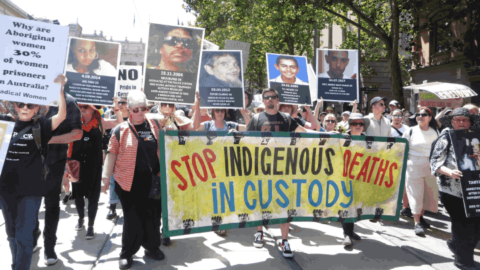
Whenever there is an issue with prisons, it disproportionately affects First Nations people, as Australia continues to imprison Indigenous peoples in much the same way the colonial project always has.
When you specifically look at the bail laws in Victoria, how are they having an overbearing effect on First Nations communities in particular?
You’re absolutely right to draw attention to the colonial project. Well beyond what I’ve just mentioned, Aboriginal and Torres Strait Islander peoples have been subjected to severe forms of surveillance and incarceration since European invasion.
This is a continuation of the carceral violence of settler colonialism and has the effect of compounding the trauma of all the historical experiences marking that trajectory.
Creating carceral sites on Country, like prisons, continues the pattern of removing First Nations peoples from their territories and/or preventing them from fulfilling responsibilities to community and Country.
This is a pattern that began with the establishment of the mission, reserves and stations system under the Protection Period, beginning in the mid-to-late 19th century.
In fact, the colony of Victoria was the first to establish this system through the Aboriginal Protection Act 1869.
However, we see this deployment of carceral violence as a technology of governmentality by settler colonies across the world.
Historically, in Australia, the objective and function of this carceral violence was to fracture the bonds of community, turning polities into populations and displacing Indigenous peoples from their territories, so they may be more easily dispossessed of them.
Today, the settler-state continues benefitting from this process of removing people from their communities.
It’s still attempting to fracture those community and cultural bonds, so that it may more easily continue to refuse to recognise Indigenous sovereignties and impose its own claims to sovereignty and jurisdictional authority over First Peoples and their territories it continues to occupy.
Turning to the Victorian Bail Act as it currently stands, this offers the settler-state another tool by which it can accelerate the hyperincarceration of First Nations peoples in Victoria.
As mentioned before, the number of Aboriginal and Torres Strait Islander peoples incarcerated since the 2018 amendment of the Act has risen from 6 to 10 percent of the Victorian prison population, despite those peoples making up just under 1 percent of the population of Victoria.
The No Crime No Time campaign has set out how the laws within the Bail Act 1977 (VIC) should be reformed. So, what would these changes consist of and what would be their impact?
The No Crime No Time campaign of last year focused most explicitly on petitioning the Victorian government in the lead-up to the election in November.
The three key demands of that petition are to get unsentenced people on remand out of Victorian prisons, remove the reverse-onus provisions in the Bail Act and create a presumption in favour of bail, placing the onus on the prosecution to demonstrate why bail should not be granted.
In Victoria, 53 percent of women in prison are on remand and 89 percent of First Nations women entering prison are unsentenced.
Of all Aboriginal and/or Torres Strait Islander people imprisoned in Victoria, 44 percent are on remand.
Addressing the three key demands of the campaign would see a dramatic reduction in the Victorian prison population, family members remaining with their families and communities, a drastic reduction in the exorbitant expenditure Victoria has on prisons, more resources for social support programs, and safer, less traumatised communities.
Crime rates have been on a downward spiral since the turn of the century, but despite this, prison numbers are growing. Over the last decade here, in NSW, we’ve been going through a prison boom.
As you say, in Victoria, there has been a huge increase in the remand population. So, in your opinion, why are prison rates going up at the same time that crime continues to drop.
Quite right. A recent Productivity Commission report, Australia’s Prison Dilemma, found current imprisonment rates are the highest in a hundred years.
The number of people per 100,000 who are incarcerated has doubled in the last 40 years, and the national imprisonment rate has increased 35 percent this century. It is a problem that exceeds the jurisdiction of the state of Victoria.
As I mentioned earlier, prisons are a technology of governmentality: imprisonment is a policy decision.
In my opinion, we can attribute the trend of increasing incarceration, despite decreasing crime, on a few factors.
One of those factors is the neoliberal turn and its attendant dismantling of the Welfare State.
This has had two important impacts: firstly, the relative reduction on social programming has meant an increasing proportion of people falling into poverty and homelessness and a general shift toward inclining inequity.
Secondly, relatively reduced taxation means governments turn to other forms of revenue collection, such as fines, citations and penalties.
This, along with increased police resourcing, means an ever-increasing number of people, particularly those in low socioeconomic circumstances, interacting with an increasingly muscular policing apparatus.
There is also the impact of tough-on-crime politics and the often-conservative media campaigns that fuel them.
The 2018 amendments to the Victorian Bail Act are a prime example of that. These bail law reforms have arguably done very little to lessen the likelihood of a mass killing event, like that perpetrated by Gargasoulas.
They have, however, undoubtedly had the effect of disrupting, and in some instances destroying, thousands of lives.
The final point I would make about this being a policy driven phenomenon is that without a deliberate policy response to drive down incarceration, that simply won’t happen.
We have seen callously few examples of such policy responses by Australian governments.
And lastly, Dave, ISJA has determined to extend the No Crime No Time campaign into the new year.
So, what’s going to be the focus for ISJA moving into 2023? And what sort of support is there for bail reform in the community?
At the moment, ISJA Melbourne is consulting with First Nations organisations to hear what direction they’d like to see the campaign head in.
There is a great deal of support in the community. We’re very fortunate to have incredible First Nations community controlled organisations and multiracial ones, like Victorian Aboriginal Legal Service, Dhadjowa Foundation and Warriors of the Aboriginal Resistance.
And we’ve further got Flemington & Kensington Community Legal Centre and Homes not Prisons acting in this space, as well as policymakers from across the political spectrum.




